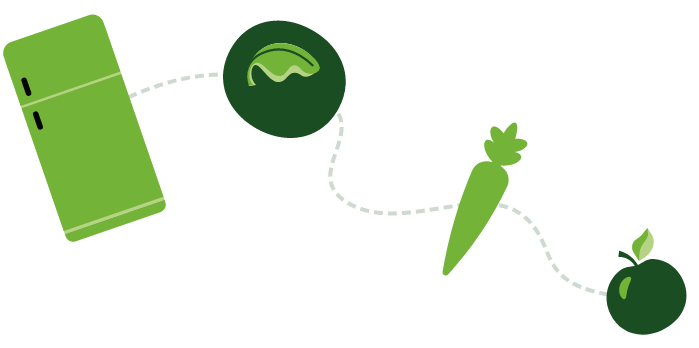Whether you live on a farm or in a tiny apartment, composting can be done anywhere.
Composting has many benefits and is a great way to reduce food waste and give your garden some extra love.
What is compost?
Compost is a mixture of ingredients used as plant fertilizer and to improve soil’s physical, chemical, and biological properties. It is commonly prepared by decomposing plant and food waste, recycling organic materials, and manure.
In simpler terms, it is old organic waste that is good for soil.
How is it sustainable?
Composting has a lot of benefits. About 8% of greenhouse gas emissions come from wasted food. Composting food waste reduces pressures on landfills, thus reducing the amount of methane (a greenhouse gas 34 times stronger than CO2).
Compost also retains a large volume of water which helps prevent erosion and reduce runoff. An additional benefit is that it will make your garden grow more than ever.
It’s not a one size fits all
Composting looks different for everyone. Luckily, there are lots of different types of compost bins to choose from.
Compost machines range in size and price and some can remain inside while others are best outside. There are also plenty of ways to make your own compost bin. You can make the simplest and cheapest bin by simply buying a big bin and drilling holes at the top to promote air circulation.
Before buying whichever compost bin, consider the following questions:
- What is my price range?
- Do I plan to store my compost inside or outside?
- What size do I want?
- Do I want to make my own bin or buy a machine?
- Do I want a machine that will do all of the work for me or do I want to do it myself?
Composting Dos and Don’ts
Did you know that human hair can be composted? There is a wide variety of items that can be composted, however, there are a lot of items that cannot, so it is good to have a list ready to look at to know what should be tossed in the compost bin versus the trash can.
Do Compost:
- All parts of fruits and vegetables (no matter how ripe)
- Eggshells
- Rice and grains
- Tea bags
- Flowers
- Coffee grounds
- Cooked food without oil, dairy, or meat
- Paper and cardboard
- Sawdust
- Nail clippings
- Hair
Don’t Compost:
- Meat and fish
- Bones
- Dairy
- Oil and butter
- Cooked food with oil, dairy, and meat
Making the Compost
Preparing your compost area
If you’ve chosen to just buy a bin or a simple composting machine, then it is recommended to deliberately layer your scraps to speed up the decomposition process.
There’s a method to add them to the pile, so you might need to store your scraps in a container. An easy way to avoid odor and frustrating insects is by putting your scraps in a bag or bin in the freezer.
Where your compost should go
The ideal composting location is a dry and shady spot. If you live in a rainy climate, avoid placing your pile or bun under places with poor drainage, or the compost may get too soggy.
Making the compost
There are two categories when composting that are the two main ingredients for your mix – the greens and browns. Greens are food scraps like fruits and vegetables, coffee grounds, or yard clippings.
The greens add nitrogen which is a crucial element for microbial growth. The brown materials are things like egg cartons, paper, and dried leaves. These things are carbon rich. An easy way to remember is that green materials are typically wet and brown materials are dry.
When beginning your compost, the layering should begin with the dry browns on the bottom with the greens on top. This is in order to allow your compost to properly aerate. The number of layers depends on the amount of space you have in your bin, but each layer should be about an inch or two thick. Ultimately, you always want more brown material than green.
Patience is Key
Composting can take a minimum of two months and as long as six months, depending on the temperature. It’s important to turn or rotate the pile using a stick or spade, or you may have a bin that rotates for you. It is recommended to rotate every 7 to 10 days when starting.
You will be able to tell when your compost is ready because it will no longer smell like a dumpster, but rather have an earthy smell and will be a fluffy texture. If it smells like trash, then it probably means it’s not composting correctly.
Characteristics of completed compost:
- Texture: crumbly and smooth, without scraps.
- Smell: rich earthy smell. Traces of sour odors means the compost needs more time.
- Color: dark and rich
- Size: one-third the original size of the pile
What to do with your compost
Compost is great for your yard and plants. Here are some ways your compost can be put to use:
- Add it to potting soil
- Work it into crop beds
- Distribute on the lawn
- Feed it to potted plants
- Add it to soil around fruit trees
- Use it as mulch
If you want to start an at home eco-friendly garden, check out our tips and tricks for starting one here.
Want to learn more ways to become a more sustainable household? Read more here!
TAKE THE CHALLENGE!
Get ready to dig into our fun and illuminating quiz to test the skills we need for a sustainable future.
Click Here